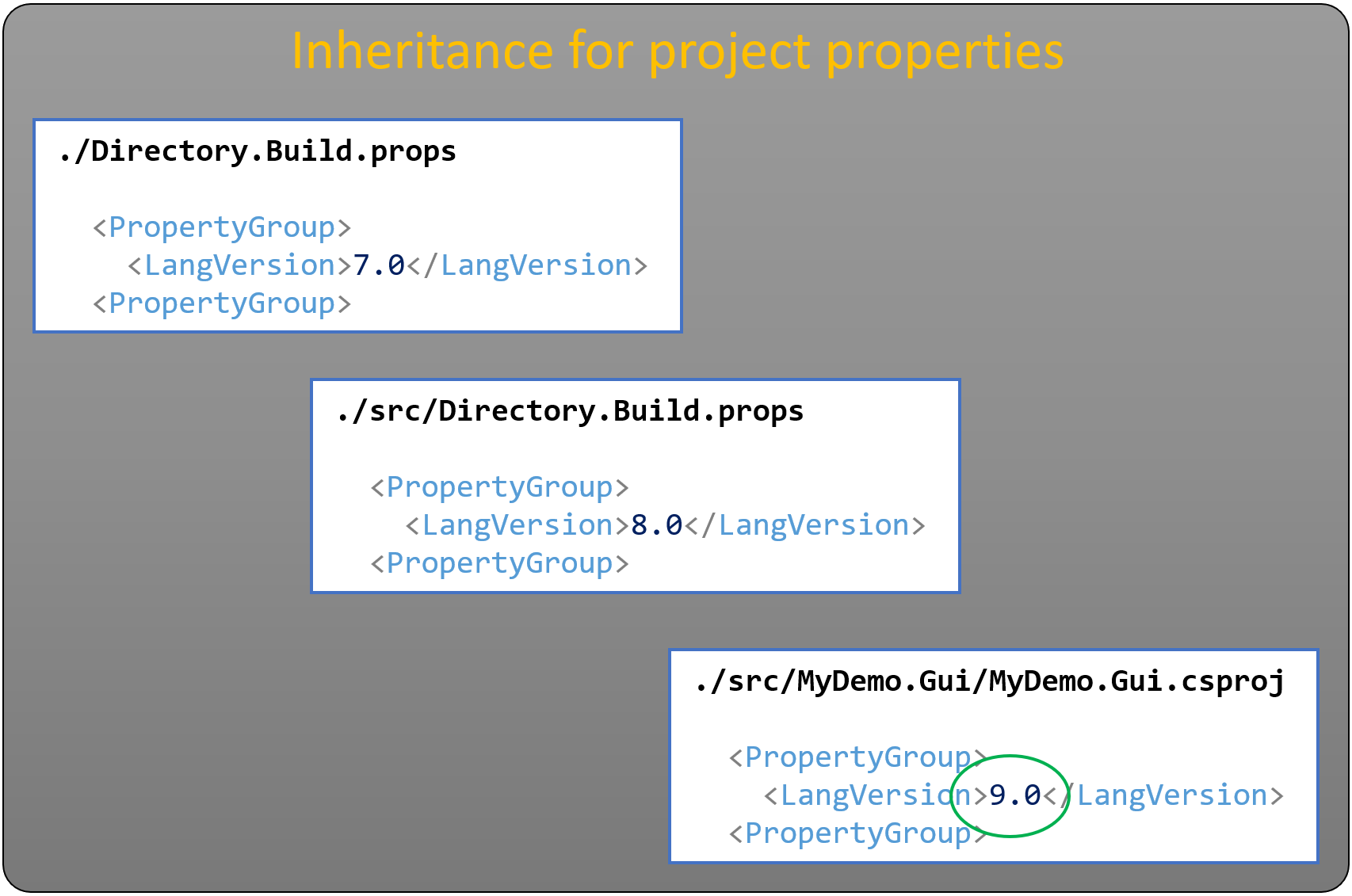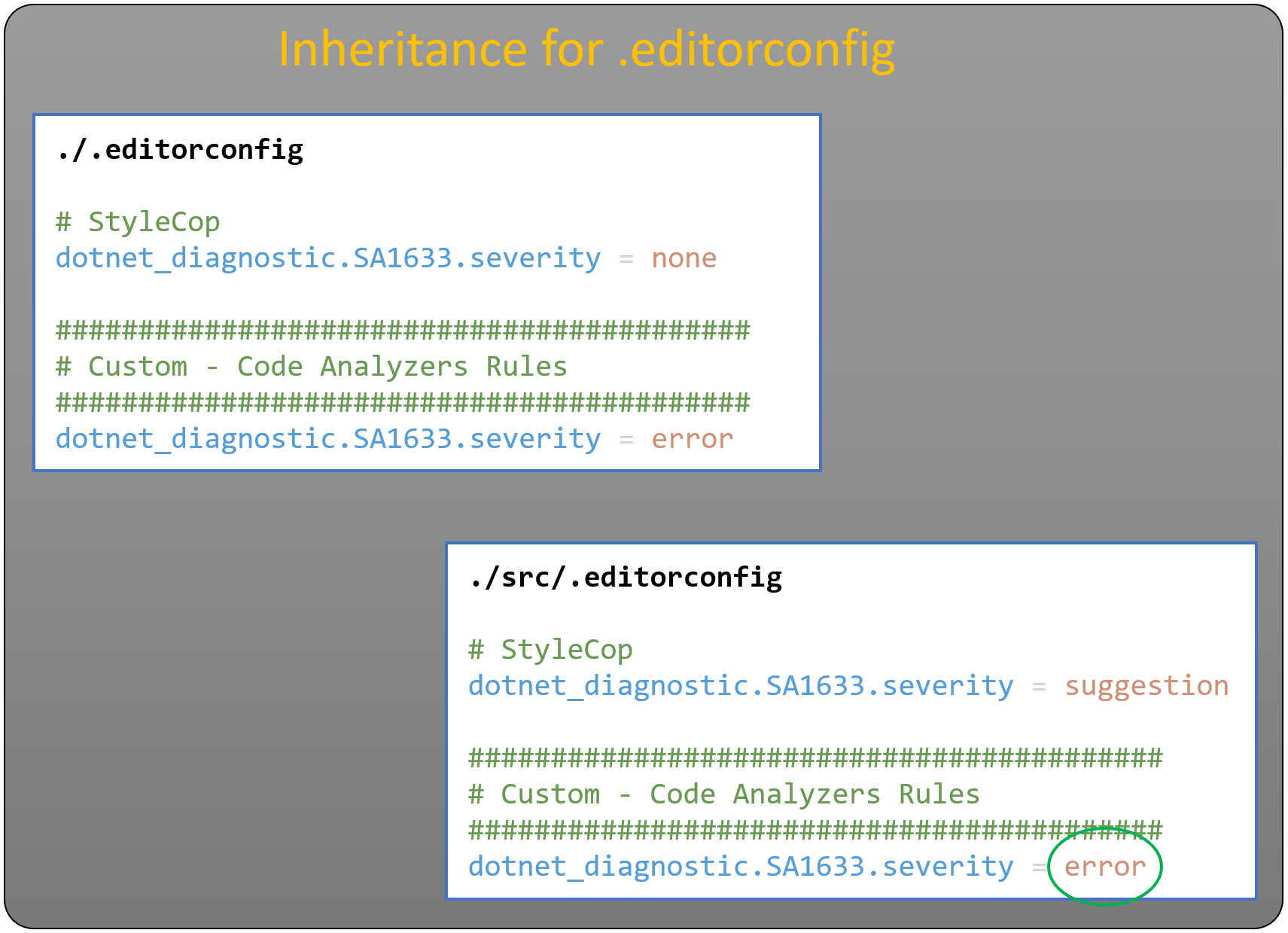ATC Analyzers Rules decisions overview
This github repository contains coding rules which are defined by the ATC core team for use in various code projects. It is a collection of code analyzers with all rules treated as errors by default - for release build.
When creating a new project, it will be a good start to download files from the distribution folder as a starting point for a solution.
The main focus for the ATC core team is Visual Studio, Visual Studio Code and .NET/C#.
A team can use the same set of code rules for all projects.
Extensive code style settings for C# have been defined that require the latest C# features to be used.
All .NET naming conventions are consistent with the .NET Framework Design Guideline's Naming Guidelines.
When a rule is found annoying and someone wants to deactivate it, this must follow a standard procedure. Firstly, argumentation must be in place as to why the rule should be disabled. Once this argumentation is in place, a session with the ATC core team can be held, where a decision will be made and afterwards executed and documented.
This means that NO rules must be deactivated by a single person and must first be documented so that everyone later can refer to this!
Take a copy of the distribution folder and drop it into the root of a project. Once this is done, when opening a file in Visual Studio, the .editorconfig file settings will automatically be used to help format the document and also raise warnings if the code style and formatting does not conform to the rules.
For Visual Studio Code, install the EditorConfig for VS Code extension to gain .editorconfig support.
One way is to use the sample provided here atc-coding-rules-updater.
Another way is to just download the files manually from the distribution folder.
Note: First time the script is run, it will create folders like src, test, sample and dump relevant files into each folder.
Directory descriptions:
src- folder for source codetest- folder for test codesample- folder for sample/demo applications
If the folder sample is not relevant - simply delete this folder, and it will not be recreated when the script is run again.
- If the rule is suppressed in code by a
SuppressMessageattribute, hopefully theJustificationdescription should clarify it. - If the rule is suppressed in the
.editorconfigand it is not defined under a custom section then the rule must be found under documentation for rules suppression overview - I can't see the rule defined as described in bullet 1 or 2 - Then the rule is INVALID - use
git blameand get the code fixed with the person/team or/and follow up on the process for code quality - e.g. improve the PullRequest-Review process.
If you have a rule you don't like, please feel free to start a suggestion proceess.
Create a new issue based on the Rule suppression suggestion
Read more on this in the rule suppression process.
EditorConfig helps developers define and maintain consistent coding styles between different editors and IDEs. The EditorConfig project consists of a file format for defining coding styles and a collection of text editor plugins that enable editors to read the file format and adhere to defined styles. EditorConfig files are easily readable and they work nicely with version control systems. Find out more at:
For atc-coding-rules the default severity setting is: dotnet_analyzer_diagnostic.severity = error
and Treat Warnings As Errors is set for Build-Target = Release
This means that atc-coding-rules only use the following severity:
errorsuggestion(Infoin Visual Studio - Error List Window)none
Read about severity-level:
Imagine that we want to set the LangVersion property. To do this we can set it directly in the .csproj file or it can be set in a Directory.Build.props file - or in both files. The MSBuild or dotnet build commands both use the file hierarchy of Directory.Build.props and .csproj to read the value of the LangVersion property. Last definition wins.
Example of a hierarcy:
The LangVersion property value will be read as: 7.0 => 8.0 => 9.0
Imagine the we want to set the severity level for a rule SA1633. To do this we can set it in the .editorconfig file and it can be set multiples times. An editor like Visual Studio or VS Code uses the file hierarchy of .editorconfig to read the key/value pair (dotnet_diagnostic.SA1633.severity). The last definition of the key/value pair wins.
Example of a hierarchy:
The dotnet_diagnostic.SA1633.severity value will be read as: none => error => suggestion => error

